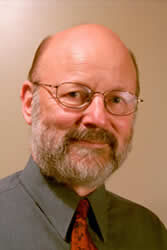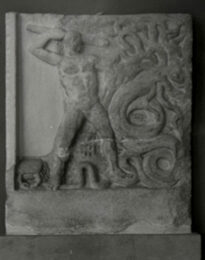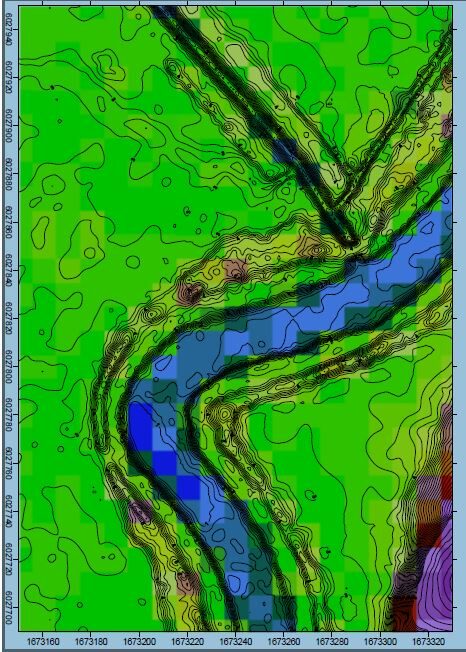3D Channel Resistance (June 2014)
HYDRA Software has published several papers on compound channel analysis. The one presented at the 2002 Modelling Conference of the New Zealand Water and Wastes Association (now Water New Zealand) has attracted several requests for reprints. HYDRA has therefore obtained permission from Water New Zealand to make this available as a web download: Click here to access it as a .pdf file
Swiss choose NZ Flood Package (2012)
A Swiss flood specialist group, Hunziker Zarn and Partner, has selected the New Zealand engineering software package AULOS as the base for a $100,000 investment in the future growth of their flood management consulting and software development business.
Announcing their choice, HZP senior partner Roni Hunziker said “We have evaluated various programs from Europe, America and New Zealand. AULOS proved to be the mature program that fulfilled our demanding requirements. Not only is the program well developed from a technical point of view, it is also distinguished by a simple, clearly structured interface. The program contains the necessary features but rejects unnecessary ballast.”
To understand how a major flood would behave along a river or coastal margin, and assess flood hazards, managers increasingly depend on modelling software. To meet this need, the AULOS package was developed by HYDRA Software of Hamilton, working with three other Hamilton-based companies – Hoare Research Software, Scott Technical Instruments and Barnett & MacMurray. A recent link with Dunedin-based Animation Research has added almost photorealistic animation to assist with interpretation of the resulting flood simulations.
HYDRA found that generations of progress by New Zealand engineers on hydropower scheme analysis had developed the basis of the world’s most powerful flood design technology. A particularly demanding test bed has been real-time operation of the giant Tekapo, Pukaki and Ohau canals in the South Island, controlling 66% of the total hydro storage of the country.
The revolutionary AULOS has introduced a new form of mathematical modelling for water infrastructure, winning several IPENZ awards. It has been shown to outperform overseas technology in both accuracy and speed, especially in channel networks such as urban drains and river floodways as well as hydropower canals.
HYDRA managing director Alastair Barnett says “The New Zealand Government action in setting up a top level Flood Task Force is typical of recognition in many countries that flood management is one of the biggest challenges facing civilization in the 21st Century. More extreme storms as well as sea level rises are predicted, which will cause heavier rains and more floods inland as well as increased coastal inundation hazard from storm surge and tsunamis. We are delighted with HZP’s decision. This opens the door for AULOS to German speaking Europe, where we see a big opening for flood management advances, particularly with the world reinsurance industry based within an easy day return trip from the HZP offices.”
Submission on Building Standards (2012)
On 17 February 2012 a submission was made to the Chief Engineer of the NZ Department of Building and Housing. This pointed out that New Zealand flood design standards are based on some of the most exhaustive full scale testing in the world on our extensive range of hydro developments. This shows that, as with earthquake design, our engineers have had opportunities to refine our techniques under conditions far more testing than those experienced in many other countries. The submission questions why such countries are then permitted to export their design software to New Zealand without any reference to New Zealand standards.
A simple Demonstration Problem is proposed for assessing compliance or non-compliance with the relevant building code: Approved Document for New Zealand Building Code Clause E1 “Surface Water” Verification Method E1/VM1. Failure to meet this test should be seen as a strong indication that the failed software package is substandard.
Click here to read the full submission
River Flow Forecasting Breakthrough (2010)
A Hamilton-based consortium has won a $110,000 contract from Mighty River Power to forecast river flow responses to operations of their Waikato power generation control system. Dr Alastair Barnett announced that the hi-tech consortium of Barnett & MacMurray Ltd, AHHA! Software Ltd and HYDRA Software Ltd developed a world breakthrough in flow monitoring and forecasting techniques for the control of the Upper Waitaki power canals, and have now extended this for use on river-based power schemes such as the Waikato. A major Swiss consulting group has already adopted this technology after comparison with competing European and North American river flow forecasting packages.
Barnett & MacMurray have now completed in-house tests demonstrating that HYDRA’s revolutionary AULOS high accuracy flow Simulator can predict river levels 48 hours ahead for all of the major Waikato reservoirs such as Lake Karapiro, with an error of less than 10 cm under normal operating conditions.
Canadians adopt NZ Technology (2010)
HYDRA Software has just signed a technology sharing deal with leading Canadian renewable energy specialists Synexus Global.
Announcing this in Hamilton, HYDRA CEO Dr Alastair Barnett (pictured) said that the locally developed AULOS water movement software had already been recognised in New Zealand by winning the 1998 Fulton Downer Gold Medal for the Te Papa tsunami protection design, and the Information Technology and Networks Category of the 2002 IPENZ Technical Awards for hydropower analysis.
“AULOS technology advances have also begun to be recognised in Europe, particularly Switzerland where the mountainous geography has similarities to New Zealand, and this new Synexus deal is welcome recognition that we can cut it in North America as well.”
Accuracy of Terrain Elevation Modelling (2010)
A report "Accuracy of Terrain Elevation Modelling" was recently prepared by Barnett & MacMurray Ltd, and is posted here with their permission. It deals with the transfer of terrain data from aerial Lidar survey to hydraulic models, and discusses the relative merits of kriging and triangulation, and the efficiency of using an intermediate square grid for processing terrain levels. A 2m square grid is shown to represent the original Lidar data almost as well as a 1m grid, but further enlargement of the grid size leads to rapid degradation in accuracy.
Click here to download the Accuracy of Terrain Elevation Modelling report.
Please note: You only have permission to download the above file if you accept the condition that the report is passed on as a whole and any content quoted is done so with the authors acknowledged.
AULOS Version 3.2 – Introducing 3D lattice solutions (2006)
At the international Hydroinformatics 2006 conference in Nice, France, Dr Barnett introduced the concept of modelling real hydraulic problems in three space dimensions and time by using what he called "3D Lattice solutions" to reduce problem complexity to a manageable level while still working with time-varying solutions in 3D space.
The heart of 3D Lattice solutions is the introduction of flow elements where warped surfaces rather than planes are used to describe the free water surface. Cross-sections may then have the conventional horizontal surface, but need not be parallel for exact mathematical description of the connecting free surface. This allows modelling of curved channels, among other things.
The complete analysis of real hydraulic problems in three space dimensions and time will be beyond the capacity of computers for the foreseeable future, but the combination of CELL Integral theory and 3D Lattice solutions within AULOS now offers users accurate, fast 3D modelling of practical problems.
The development of this facility in AULOS is an on-going theme of the releases in Hydra's Version 3 project. AULOS version 2.5 provided a capacity for multi-layered network connections at 3D nodes. Version 3.1 located cross-sections using horizontal map coordinates as well as a vertical datum. Version 3.2 uses these facilities to generate a highly efficient 3D matrix structure for very fast computational solutions, and completes the mapping of solutions to and from 3D space.
Typically, tens of years of prototype time can now be run in minutes of computing time without any compromise of solution accuracy.
The results lend themselves well to computer-generated animation, as has been recognized by Animation Research Ltd, a specialist company well-known for their work on yacht racing simulation in America’s Cup coverage. ARL now offer post-processing of AULOS results into flood animations customized to client requirements.
Urban Storm Water Hydraulic Modelling Software Evaluation Project (2005)
This project was mostly completed in 2004. A summary of the report was published in Water & Wastes in NZ (The NZWWA Journal) September 2005, pp 26-27.
EXECUTIVE SUMMARY OF THE MAIN REPORT
"A research project has been undertaken to evaluate selected urban drainage hydraulic modelling software packages used in New Zealand. The evaluation employed three test cases and the simulation results are presented and discussed. The test cases employed were:
- Simulation of an energy solution for a simple pond and outflow case
- Application of the software packages for some real catchment with observed rainfall and flow data
- Application of the software packages to a low impact design example
In addition to the qualitative evaluation a more quantitative evaluation has been undertaken and the software rated on their applicability to urban drainage modelling. Recommendations are made for investigative projects in relation to hydrological and hydraulic storm water urban drainage modelling."
WE NOTE IN THE REPORT:
"It is considered that the serious hydraulic modelling practitioner should have access to tools that offer both advanced GIS and analysis features, efficient model data handling and solutions to momentum and energy equations. This requirement calls for the access to packages such as InfoWorks or MOUSE as well as packages such as AULOS."
It seems to us that they are saying that AULOS is the necessary package, and that you should have the others as well, for the reasons given.
The origins of our brand identities HYDRA and AULOS Hydraulics
The engineering discipline "hydraulics" comes from the Greek hudor "water" + aulos "pipe". Our main hydraulic design product "AULOS" (pronounced in English to rhyme with the names "PAUL" + "GLOSS") derives from that origin. Our company name "HYDRA" links with hudor, but also pays tribute to Hercules, perhaps the prototype hydraulic engineer! (See image)
As well as sorting out the water monster called Hydra (probably a troublesome swamp with its associated deadly fevers), many other famous feats of Hercules (or Herakles) are directly related to water. His mother is supposed to have commented that "Hercules is always digging ditches", which might sound oddly familiar to some of us! Whether this was true or not, he is known throughout antiquity for his swamp-draining efforts.
The evolution of AULOS
1. CREEK - 1969. Steady backwater analysis in irregular channels of arbitrary shape.
2. RIVERS - 1976. Unsteady flow in hydro canal networks, both open and closed conduits.
3. HYDRA - 1988. First CELL Integral solutions, unsteady flow in highly irregular channels.
4. MIKE11 UD - 1991. HYDRA engine integrated with MIKE 11 user interface.
5. AULOS - 1998. MIKE 11 interface replaced by a new Windows user interface. Solution of the full hydraulics equations extended to both rivers and sewers.

